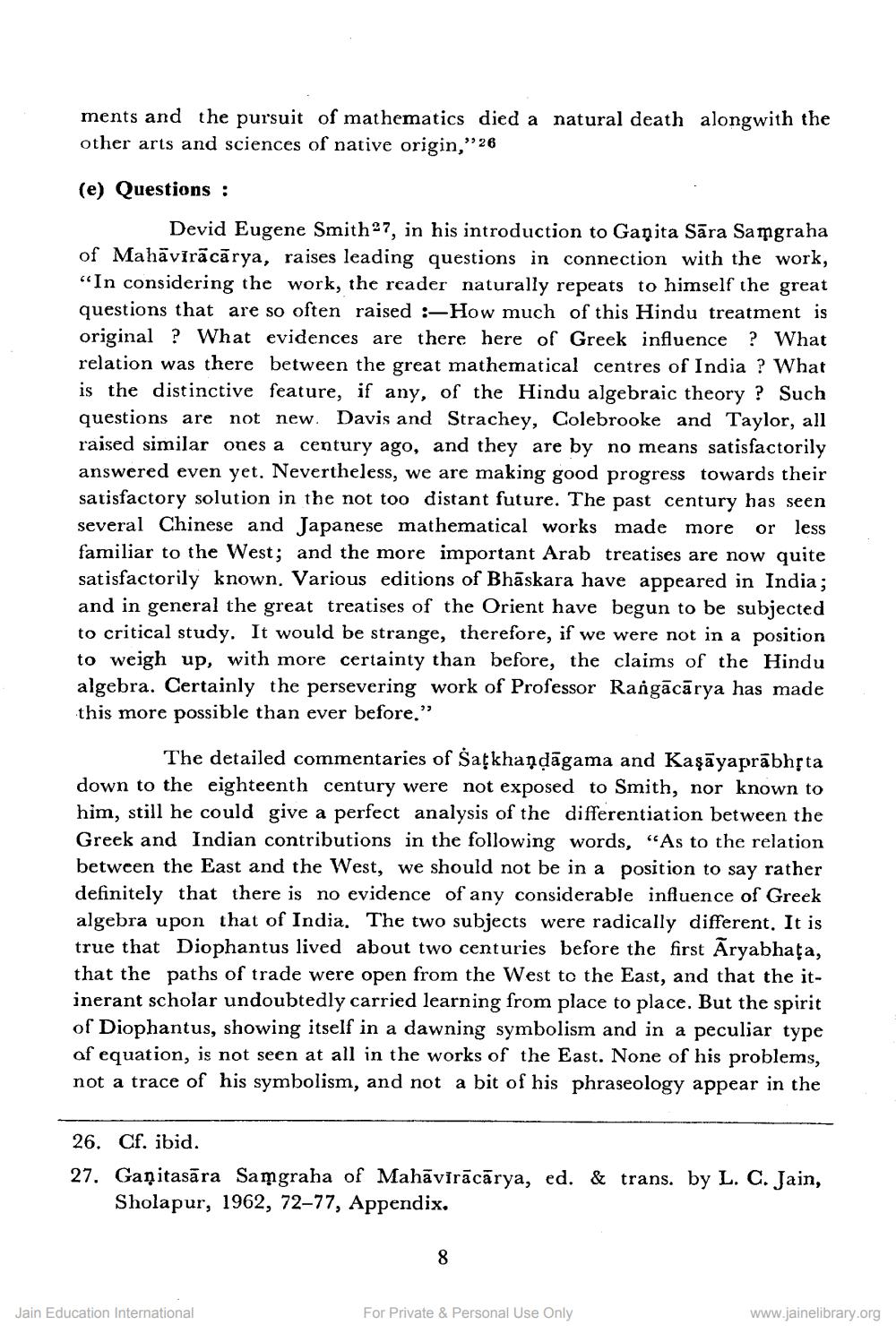________________
ments and the pursuit of mathematics died a natural death alongwith the other arts and sciences of native origin,"26
(e) Questions :
Devid Eugene Smith 27, in his introduction to Ganita Sāra Samgraha of Mahāvīrācārya, raises leading questions in connection with the work, “In considering the work, the reader naturally repeats to himself the great questions that are so often raised :-How much of this Hindu treatment is original ? What evidences are there here of Greek influence ? What relation was there between the great mathematical centres of India ? What is the distinctive feature, if any, of the Hindu algebraic theory ? Such questions are not new. Davis and Strachey, Colebrooke and Taylor, all raised similar ones a century ago, and they are by no means satisfactorily answered even yet. Nevertheless, we are making good progress towards their satisfactory solution in the not too distant future. The past century has seen several Chinese and Japanese mathematical works made more or less familiar to the West; and the more important Arab treatises are now quite satisfactorily known. Various editions of Bhāskara have appeared in India; and in general the great treatises of the Orient have begun to be subjected to critical study. It would be strange, therefore, if we were not in a position to weigh up, with more certainty than before, the claims of the Hindu algebra. Certainly the persevering work of Professor Raigācārya has made this more possible than ever before."
The detailed commentaries of Satkhandāgama and Kaşāyaprabhsta down to the eighteenth century were not exposed to Smith, nor known to him, still he could give a perfect analysis of the differentiation between the Greek and Indian contributions in the following words, “As to the relation between the East and the West, we should not be in a position to say rather definitely that there is no evidence of any considerable influence of Greek algebra upon that of India. The two subjects were radically different. It is true that Diophantus lived about two centuries before the first Aryabhata, that the paths of trade were open from the West to the East, and that the itinerant scholar undoubtedly carried learning from place to place. But the spirit of Diophantus, showing itself in a dawning symbolism and in a peculiar type af equation, is not seen at all in the works of the East. None of his problems, not a trace of his symbolism, and not a bit of his phraseology appear in the
26. Cf. ibid. 27. Gañitasāra Samgraha of Mahāvīrācārya, ed. & trans. by L. C. Jain,
Sholapur, 1962, 72–77, Appendix.
Jain Education International
For Private & Personal Use Only
www.jainelibrary.org




